Reduced wiring in Smart Amp setups reduces ambient and common mode noise, increases comfort, and improves the group dynamic!
Smart Amplifiers connect to an MP160 Research System via an Amplifier Interface Module (AMI100D); Smart Amps are not compatible with MP150, MP100, HLT100C, or MP36R devices. For output, add CBL237 with OUTISO or similar. AcqKnowledge Smart Amp setup includes guides and prompts to prevent errors. Plus, channels are automatically set to be plotted and included in input values display, with the initial visual range set to the min/max input range for the Smart Amplifier signal type, in appropriate units. AcqKnowledge 5.0.4 and above support Smart Amp functionality.
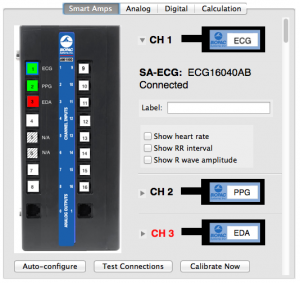 Auto-detect signal type & offer derived measures
Auto-detect signal type & offer derived measures
Green: configured & detected
Red: configured but not found
White: unused/available
Dashed: in use/not available
For quick access to Smart Amp options, click the CH# box.
Use with:
Mini-pinch leads, two-lead or three-lead in 15 cm, 30 cm, or 45 cm
BN-EL15-LEAD2BN-EL30-LEAD2 BN-EL45-LEAD2
BN-EL15-LEAD3 BN-EL30-LEAD3 BN-EL45-LEAD3
Touchproof adapters, 15 cm, sockets accept TP leads
BN-ADAPT-TP2 (+,-) BN-ADAPT-TP3 (+. -, GND)
Electrodes: vinyl or cloth, pre-gelled or dry
EL500 series disposable electrodes
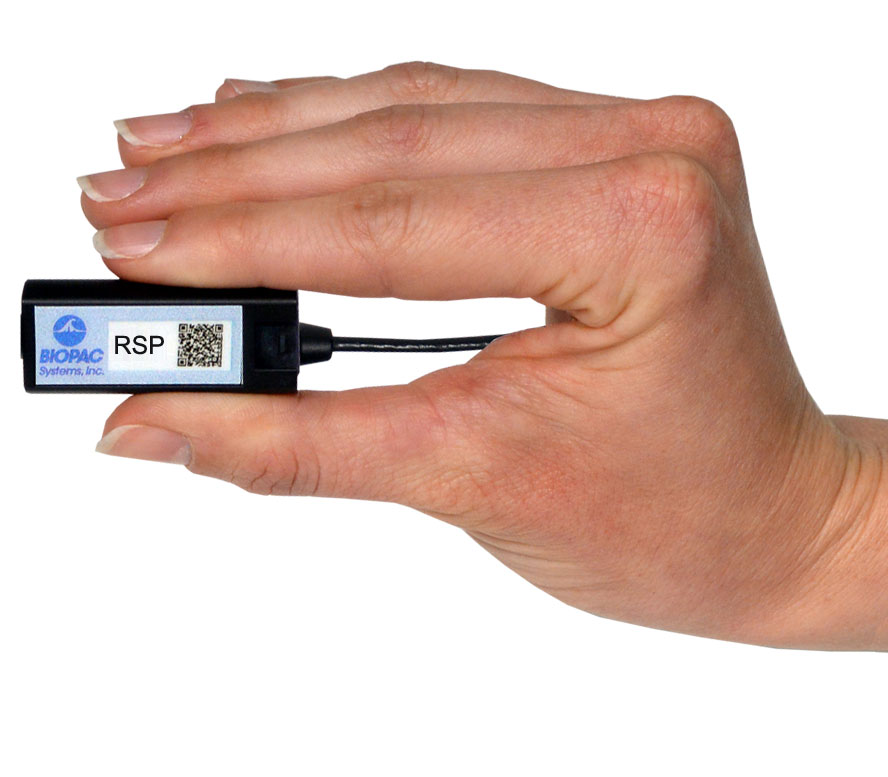



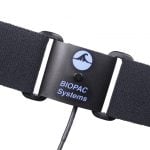
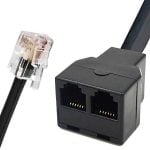
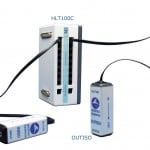
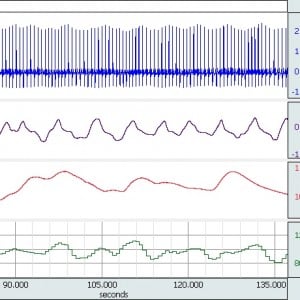
Stay Connected